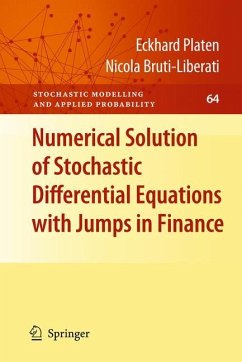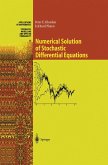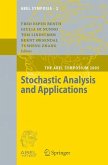In financial and actuarial modeling and other areas of application, stochastic differential equations with jumps have been employed to describe the dynamics of various state variables. The numerical solution of such equations is more complex than that of those only driven by Wiener processes, described in Kloeden & Platen: Numerical Solution of Stochastic Differential Equations (1992). The present monograph builds on the above-mentioned work and provides an introduction to stochastic differential equations with jumps, in both theory and application, emphasizing the numerical methods needed to solve such equations. It presents many new results on higher-order methods for scenario and Monte Carlo simulation, including implicit, predictor corrector, extrapolation, Markov chain and variance reduction methods, stressing the importance of their numerical stability. Furthermore, it includes chapters on exact simulation, estimation and filtering. Besides serving as a basic text on quantitativemethods, it offers ready access to a large number of potential research problems in an area that is widely applicable and rapidly expanding. Finance is chosen as the area of application because much of the recent research on stochastic numerical methods has been driven by challenges in quantitative finance. Moreover, the volume introduces readers to the modern benchmark approach that provides a general framework for modeling in finance and insurance beyond the standard risk-neutral approach. It requires undergraduate background in mathematical or quantitative methods, is accessible to a broad readership, including those who are only seeking numerical recipes, and includes exercises that help the reader develop a deeper understanding of the underlying mathematics.
From the reviews:
"The book is accessible at a graduate student level, though some parts of the book are more advanced. It can also be used by readers with enough mathematical background as a reference book for methods and techniques on numerical approximations of SDEs. ... contains an extensive up-to-date bibliography, including bibliographic notes for each chapter, making it an excellent reference source on numerical solutions of SDEs with jumps. The book is very well written and can be used as a textbook for a graduate level course." (Igor Cialenco, Mathematical Reviews, Issue 2012 b)
"This research monograph by Eckhard Platen and Nicola Bruti-Liberati gives a comprehensive account of the theory of numerical approximation of solutions of stochastic differential equations driven by jump processes. ... The material is supplemented by a large number of exercises. The underlying principles are carefully explained and well motivated by the authors. ... I enjoyed very much the lucid and clear writing style of the exposition in combination with many interesting examples from mathematical finance." (H. M. Mai, Zentralblatt MATH, Vol. 1225, 2012)
"The book is accessible at a graduate student level, though some parts of the book are more advanced. It can also be used by readers with enough mathematical background as a reference book for methods and techniques on numerical approximations of SDEs. ... contains an extensive up-to-date bibliography, including bibliographic notes for each chapter, making it an excellent reference source on numerical solutions of SDEs with jumps. The book is very well written and can be used as a textbook for a graduate level course." (Igor Cialenco, Mathematical Reviews, Issue 2012 b)
"This research monograph by Eckhard Platen and Nicola Bruti-Liberati gives a comprehensive account of the theory of numerical approximation of solutions of stochastic differential equations driven by jump processes. ... The material is supplemented by a large number of exercises. The underlying principles are carefully explained and well motivated by the authors. ... I enjoyed very much the lucid and clear writing style of the exposition in combination with many interesting examples from mathematical finance." (H. M. Mai, Zentralblatt MATH, Vol. 1225, 2012)








